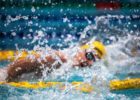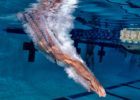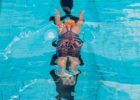Improving Metrics with Drills
One of the greatest advantages of tracking metrics is it allows for easy identification of specific areas of improvement in individual swimmers.
The 5 Most Common Taper Mistakes
The concept of “taper” is sacred in the world of swimming. Who doesn’t look forward to it? Even the word itself brings joy, carrying warm connotations of reduced training loads and signaling fast racing on the horizon.
How to Build a Winning Swim Training Plan
Just as with most things, there are no shortcuts to swimming fast. It takes hard work and a good amount of dedication, both in and out of the water.
Test Sets: Measuring Progress Effectively
As we settle into familiar routines – school and swim practices resuming, and beginning to set our goals for the season and school year ahead. But everyone knows goals are not enough on their own.
How to Swim Faster Butterfly
By TritonWear Swimming butterfly is no joke. Unlike other strokes, you can’t get away with putting in minimal effort in…
5 Ways to Optimize Your Backstroke Technique
Learning to swim backstroke isn’t an impossible task. Once you’re able to float on your back, everything else comes fairly easily with enough practice. But, actually swimming backstroke well can be slightly more challenging.
How to Swim Faster Freestyle
Whether you’re a triathlete training for open water, a competitive swimmer, or a recreational swimmer, learning to swim faster and improving your freestyle is likely on your radar.
Why Your Breaststroke Technique is Failing You
Breaststroke is the slowest among all the strokes, and one of the toughest to master in terms of technique. The good news is, making even the slightest adjustments can result in better stroke efficiency and a faster swim.
Signs You’re Training Too Hard (Or Not Enough)
Overtraining happens when the body undergoes stress at a faster rate than it can recover. Studies have shown overtraining to increase risks of injury, where most athletes are already training with between a 20-30% risk.








